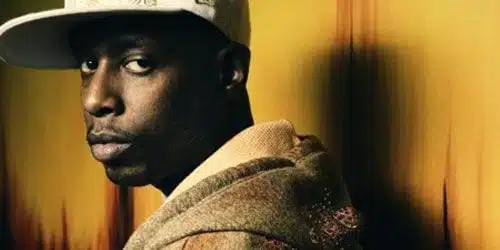
If you have been to a hip-hop show, you know they can be one hell of a good time. Of course, that all depends on a number of key factors such as the crowd’s enthusiasm and, obviously, how well the act on stage performs. While it’s absolutely true that those points can be raised for any type of concert, the hip-hop show remains a unique animal. For example, when seeing a band perform, there is usually only slight interaction with the crowd, like a “we’re glad to be here in Boston!” or “we need your help on this one,” also known as asking the audience to sing-along for the chorus.
There are clearly exceptions, such as Ben Folds, who crave heavy participation and do more than just acknowledge the guys and gals standing before them. But even with minimal interaction, those concerts can still be moments you will forever remember. Hell, even though Thom Yorke only muttered a “thank you” once or twice, seeing Radiohead was unbelievable.
But a successful hip-hop show, on the other hand, is meant to be more than just a great performance. While watching someone like Brother Ali, who is known for his fantastic stage presence, rip through a set is well worth the price of admission; it’s his ability to hold the crowd in the palm of his hand that makes you want to see him again and again. And it’s not just the whole “When I say hip, you say hop” nonsense. It is, perhaps, the humble sense of appreciation shared by both the artist and the audience. There are also the unexpected surprises like unexpected guests, freestyle and b-boy ciphers, and so on that make the concert transform into a party.
Yet, as much fun as all that sounds and is, it does not usually translate well to video. There are always exceptions, such as the Roots, who are as enjoyable to watch on YouTube as they are from the pit. But, for the most part, the video cannot capture the energy of actually being there. And, as stated, it’s not like watching a DVD of Radiohead or Nine Inch Nails where the songs take on a new life and are highlighted by intense visuals. Viewing Talib Kweli’s new Live at the Shrine DVD, however, is a lot like watching a party on TV. It’s interesting for a minute or two, but it quickly becomes background noise as you move on to other things. That feeling doesn’t just come from the energy that’s lost in the translation from live show to video; it’s grounded mostly in the fact that this DVD is, to be blunt, dreadful. And that, coming from someone who has enjoyed several Kweli shows, is a damn shame.
Some of the problems that plague Live at the Shrine could have been easily solved if Kweli had chosen to record a different concert. Instead, we have 38 minutes of footage from this venue in Los Angeles where a mostly stoic crowd shows minimal love. Now it’s possible that the soundboard didn’t pick up the cheers or shouted lyrics, but the opposite may also be true. While I haven’t been to a show in L.A. myself, I’ve heard from several sources that fans there are typically reserved. KRS-One, who appears on the DVD, addresses that issue in an interview. He tries to justify the fact that L.A. fans are there to listen rather than be lively, which might make them seem less enthused. But if you ask me, the people who filled the clubs in Boston where Kweli performed were listening as much as they were bugging out. So it makes one wonder why the hell he would chose to use this show and not one where the crowd looked excited to be there.
To be fair to the West Coast, though, it’s not like the concert they were watching was anything especially spectacular anyway. While Kweli is a capable performer, he is not even close to the likes of KRS, who kills it during his verse on the night’s closer “The Perfect Beat”, or Black Thought, who is widely known for his ridiculous breath-control and ability to slay audiences. Comparatively, Kweli relies too much on his DJ to be his hypeman/rhyme-finisher, which can be aggravating. And he also cuts many of his tracks short, like “The Blast” and “Say Something”. Of course, he has to do that since the other rappers on those songs are nowhere to be seen, which is odd since he usually tours with “Say Something”-guest Jean Grae.
Either way, why didn’t he just choose tracks that he could handle himself? We instead get appearances from KRS, Strong Arm Steady, who thankfully bring some energy to the stage and video for “Go With Us” and “One Step”, and Res, who you can take or leave as she sings the hook on “Too Late”. Even more frustrating is the lack of back-up singers, who usually belt out the hooks for “Never Been in Love” and others. While it might seem like a minor issue, anyone who has seen Kweli before knows his trio of ladies adds a necessary layer of depth and flavor. They also fill-out the stage, which, on this DVD at least, is bare and painfully drab.
What you end up paying for is a brief set of songs that are mostly half-performed in front of a crowd that lacks a pulse. Also, the additional features like rehearsal footage and KRS’s interview are, at best, average. It goes without saying that you should save your money for an actual Kweli concert or, better yet, when he opens for a more polished performer.
